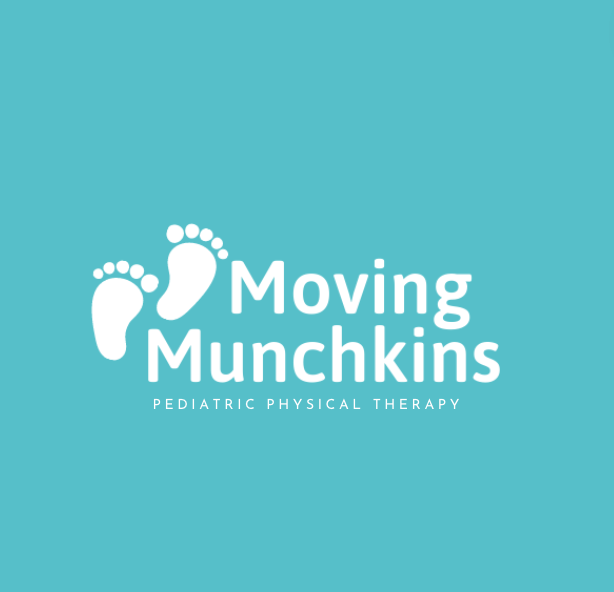Supporting Your New Walker: Tips & Activities for Strong, Confident Steps
Watching your munchkin take their first steps is one of the most exciting milestones of early childhood! As a pediatric physical therapist, I often get questions from parents about how to support their little one’s new walking skills. While every child develops at their own pace, there are simple, fun ways you can encourage strength, balance, and confidence in your toddler’s walking journey.
Once your munchkin starts taking those first steps, they’re in the new walker phase, which typically happens between 9-18 months. During this time, they are learning to: Balance on both feet, coordinate their steps, gain strength from their core to their toes, and navigate all the different surfaces around them.
Looking for stability, new walkers often start with a wide-legged, arms-up stance. Over time, their stride will become smoother and more controlled—but they need practice and support to get there!
These are a few of my favorite ways parents can support their new walkers:
Create a safe walking space. Make sure the floor is clear of tripping hazards such as rugs, toys and cords.
Allow them to walk barefoot when possible—this strengthens foot muscles and improves balance. Check it out HERE!
Provide a variety of surfaces to explore with their little piggies. Think - carpet, hardwood, grass, and even sand!
Now - here comes the hardest part for some parents. Letting go. Encouraging independence is essential for new walkers, so it's best to avoid holding their hands too much. Instead, let them walk independently and find their balance naturally. If they need some assistance, try holding them by one hand or on top of their shoulders. Walking isn’t just about taking steps; it’s about exploring, reaching, and interacting with the world around them. By giving them space and opportunities for free play, they can develop the confidence and skills they need to master walking at their own pace.
Get your munchkin to do some squats! Building leg and core strength is crucial for developing strong walking skills, and one of the best ways to support this is by encouraging your child to squat and stand up frequently. Placing toys on the floor in front of them is a great way to encourage natural squatting as they reach down and stand back up. This motion helps strengthen their leg muscles, improves stability, and enhances their ability to control their movements, all of which contribute to better walking confidence.
While walkers may seem like a convenient tool, they can actually promote unnatural movement patterns and reliance on external support. Instead, offering a push toy or even a sturdy household item like a laundry basket filled with books can provide a stable yet mobile support system for your toddler. These allow them to push forward and practice walking in a way that strengthens their legs and improves their balance without restricting natural movement.
Making walking practice fun is key to keeping your toddler engaged! Setting up a simple obstacle course using pillows, tunnels, or cushions can help them practice stepping over, around, and through different obstacles, improving their coordination and balance. Another fun way to support motor development is through animal walks—pretending to be a bear (walking on hands and feet), a duck (squat walking), or a crab (walking sideways) can make movement both enjoyable and beneficial for their strength and coordination.
Playing with a ball is another great way to enhance walking skills. Rolling and chasing after a ball encourages movement and builds agility, while kicking a soft ball helps improve balance and leg coordination. Additionally, interactive games like "Red Light, Green Light" or freeze dance can teach toddlers how to control their movements, respond to cues, and practice stopping and starting, which are all important for overall motor development.
Climbing and stepping up and down different surfaces also play a huge role in walking development. Encouraging your child to climb low steps, soft furniture, or toddler-friendly play structures helps build leg strength and coordination while also improving their ability to navigate different surfaces. These small but effective activities prepare them for more complex movements as they continue to develop.
Every child learns to walk at their own pace, and that's completely normal. Some toddlers may start walking as early as 9 or 10 months, while others may take their first independent steps closer to 18 months. Trust the process and allow your child the time and space they need to develop at their own speed. Walking is a journey, and with patience, encouragement, and the right activities, your little one will soon be confidently on the move!
**Most toddlers figure out walking on their own, but if you notice any of these signs, a pediatric physical therapist can help:
-Not pulling to stand by 12 months
-Not taking steps by 18 months
-Frequent falling, walking on toes only, or stagnant progression of motor skills.
Your toddler’s walking journey is an exciting time filled with adventure, curiosity, and discovery. By creating a safe, supportive environment and engaging in fun movement-based activities, you’ll help build their confidence, strength, and coordination as they transition from new walker to confident explorer!
Cheering you and your munchkin on every step of the way!


